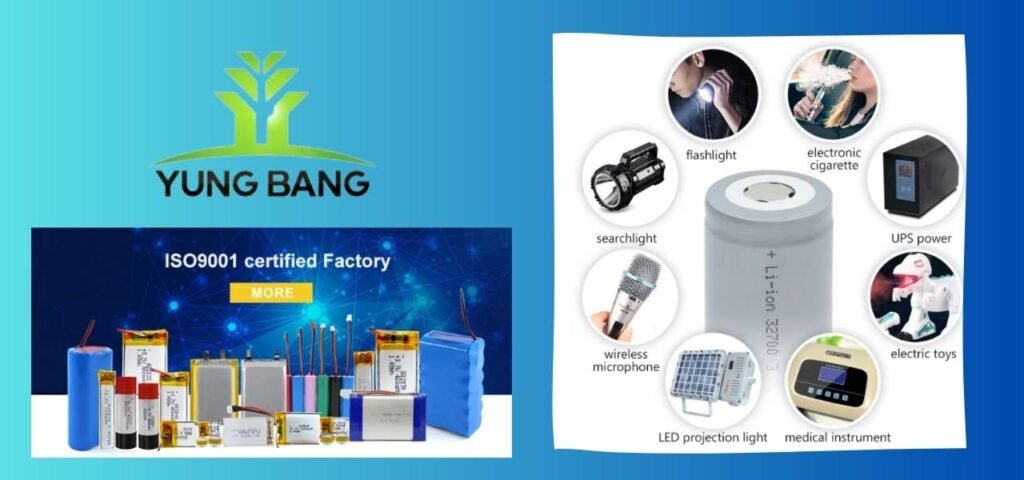1.What is a Li-Polymer battery 7.4V?
A Li-Polymer 7.4V battery is a lithium polymer battery with a voltage of 7.4 volts (V). It is a rechargeable battery commonly used in various electronic devices and applications such as drones, remote-controlled cars, wireless devices, etc. Li-Polymer batteries are composed of lithium ions and polymer electrolytes, providing high energy density, lightweight, and compact size. They offer better performance and longer lifespan compared to other types of batteries, hence widely used in many portable and embedded devices.
2.How is a Li-Polymer battery 7.4V classified?
Li-Polymer 7.4V batteries can be classified based on different characteristics and applications. Here are some possible classification methods:
Capacity: Battery capacity is typically measured in milliampere-hours (mAh), indicating the amount of charge the battery can store. Higher capacity means more energy the battery can provide. Li-Polymer 7.4V batteries can vary in capacity from a few hundred mAh to several thousand mAh.
Size and Shape: Li-Polymer batteries can be classified based on different sizes and shapes to meet various device design requirements. They may come in cylindrical, square, or other custom shapes.
Discharge Rate: Discharge rate indicates the battery’s ability to deliver charge in a short period. High discharge rate batteries are suitable for applications requiring high instantaneous energy output, such as drones or remote-controlled cars, while low discharge rate batteries are more suitable for long-duration, low-power applications.
Application: Li-Polymer 7.4V batteries can be classified based on their intended applications, such as for aviation models, remote-controlled vehicles, medical devices, or industrial applications.
Charging Characteristics: Some Li-Polymer batteries may have different charging characteristics, such as fast charging or balanced charging, depending on user requirements.

3.How does a Li-Polymer battery 7.4V work?
Positive and Negative Electrodes: Li-Polymer batteries typically have a positive electrode composed of lithium cobalt oxide (LiCoO2) and a negative electrode made of graphite or other carbon-based materials. These electrodes are separated by a polymer electrolyte membrane.
Movement of Lithium Ions: During charging, lithium ions (Li+) move from the positive electrode to the negative electrode through the electrolyte and membrane, causing the battery to charge. During discharging, lithium ions move from the negative electrode to the positive electrode through the external circuit, releasing electrons and providing power to connected devices.
Chemical Reactions: Chemical reactions occur between the positive and negative electrodes during charge and discharge cycles, with lithium ions being intercalated or deintercalated from the electrode materials. These reactions are the primary mechanisms of battery charge and discharge.
Electrolyte: The electrolyte plays a crucial role in facilitating the movement of lithium ions between the electrodes while preventing direct electron flow between the positive and negative electrodes.
4.What is the difference between a 7.4V Li-Polymer battery and a 3.7V Li-Polymer battery?
Voltage:
7.4V Li-Polymer Battery: This battery consists of two battery cells, each with a nominal voltage of typically 3.7V. When the two cells are connected in series, the total voltage is 7.4V.
3.7V Li-Polymer Battery: This is the nominal voltage of a single battery cell, resulting in a total voltage of 3.7V.
Application:
7.4V Li-Polymer batteries are typically used in applications requiring higher voltage or more power, such as some large drones or remote-controlled vehicles.
3.7V Li-Polymer batteries are commonly used in smaller electronic devices, such as smartphones, tablets, portable speakers, etc.
Capacity:
Due to the different voltages, Li-Polymer batteries with the same capacity but different voltages will have different energy storage capacities. For example, a 1000mAh 7.4V Li-Polymer battery will provide more energy than a 1000mAh 3.7V Li-Polymer battery.
Charging and Management:
Due to the 7.4V Li-Polymer battery consisting of two battery cells, charging and management may require more complexity. Ensuring balanced charging of the two cells is essential to avoid issues arising from imbalances.

5.Parameters of a 1200mAh Li-Polymer battery 7.4V
Standard Voltage: 7.4V (2S)
Continuous Working Current: 1A
Charging Current: 0.5A
Charging Temperature: 0°C to 45°C
Discharging Temperature: -10°C to 60°C
Cut-off Voltage: 6V
Overcurrent Protection: 3~5A
Short Circuit Protection: Yes
Communication Method: None
Dimensions: 193855 (mm)
Capacity: 1200mAh
Applicable Types: Small Printers
Customizable options include voltage, model, casing, terminals, and wire length.
6.Parameters of a 2600mAh Li-Polymer battery 7.4V
Standard Voltage: 7.4V
Continuous Working Current: 2A
Charging Current: 1A
Charging Temperature: 0-45℃
Discharging Temperature: -10-60℃
Cut-off Voltage: 6V
Overcurrent Protection: 3~4A
Short Circuit Protection: Yes
Communication Method: None
Dimensions: Customizable (mm)
Capacity: 2600mAh
Applicable Type: Handheld Devices
7.Parameters of a 3500mAh Li-Polymer battery 7.4V
Standard Voltage: 7.4V
Dimensions: 213970 (mm)
Capacity: 3500mAh
Applicable Types: Electronic Products
Storage Temperature: -10°C to 45°C
Operating Temperature: -10°C to 60°C
Customizable options include voltage, model, casing, terminals, and wire length.
8.Parameters of a 4400mAh Li-Polymer battery 7.4V
Standard Voltage: 7.4V
Continuous Working Current: 2.0A
Charging Current: 2.0A
Charging Temperature: 0°C to 45°C
Discharge Temperature: -10°C to 60°C
Cut-off Voltage: 5.6V
Dimensions: 21.58075.0 (mm)
Capacity: 4400mAh
Applicable Devices: Smart Home
9.Parameters of a 5000mAh Li-Polymer battery 7.4V
Standard Voltage: 7.4V
Dimensions: 3016200 (mm)
Capacity: 5000mAh
Applicable Type: Industrial tablets
Storage Temperature: -0°C-45°C
Operating Temperature: -20°C-60°C
10.Parameters of a 6300mAh Li-Polymer battery 7.4V
Standard Voltage: 7.4V
Dimensions: Customizable (mm)
Capacity: 6300mAh
Applicable Type: Handheld Devices
Storage Temperature: -0°C-45°C
Operating Temperature: -10°C-60°C
11.Parameters of a 7000mAh Li-Polymer battery 7.4V
Standard Voltage: 7.4V
Dimensions: 1210100 (mm)
Capacity: 7000mAh
Applicable Types: Industrial Equipment
Storage Temperature: -20°C to 45°C
Operating Temperature: -10°C to 60°C
Customization Support: Voltage, Model, Casing, Terminals, Cable Length
12.What is a 7500mAh Li-Polymer battery 7.4V?
Standard Voltage: 7.4V
Dimensions: 13775120 (mm)
Capacity: 7500mAh
Applicable Types: Industrial Equipment
Storage Temperature: -20°C to 45°C
Operating Temperature: -10°C to 60°C
Customization Support: Voltage, Model, Casing, Terminals, Cable Length

13.How to choose a Li-Polymer battery 7.4V?
Capacity (mAh): Choose the capacity based on the power consumption and usage requirements of your device. Higher capacity provides longer working time.
Voltage (V): Select the appropriate voltage according to your device’s power requirements. 7.4V is a common battery voltage, but ensure it matches your device’s specifications.
Discharge Rate: Ensure the battery’s discharge rate meets your device’s power output requirements.
Size and Weight: Consider the battery’s size and weight to fit your device’s space and weight limitations.
Safety: Choose Li-Polymer batteries with safety protection features such as overcharge, over-discharge, and short circuit protection.
Cost: Consider your budget and choose high-quality Li-Polymer batteries from reputable brands to ensure performance and safety.
Brand and Quality: Opt for well-known brands known for quality control and customer support to avoid potential safety risks and performance issues.
14.About Yungbang Battery Factory
Under normal circumstances, Yungbang provides free lithium battery design and sample services to meet various customer needs. However, for custom sample orders of particularly unique lithium battery products, there may be charges, and we will communicate this with the customer in advance.
Yungbang’s factory is equipped with multiple product production quality assurance systems. We offer free quality inspections and also support third-party inspection agencies in conducting random or comprehensive inspections of the produced goods.
Yungbang guarantees product quality. If any quality issues arise due to products manufactured by us, we can provide free replacements or compensation.

